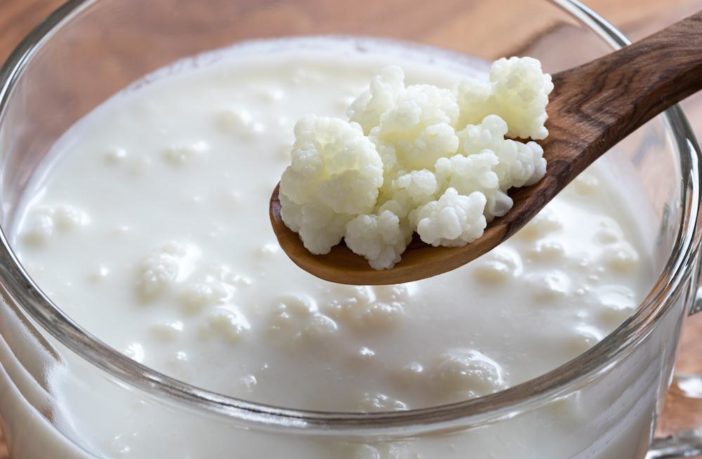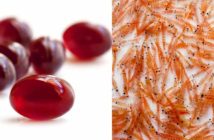The global kefir market was valued at US$ 1233.6 million in 2016, according to the Global Kefir Market Report, by Composition (Milk and Water), by Product Type (Organic Kefir, Greek Kefir, Low Fat Kefir, Frozen Kefir), by Application (Dips, Sauces & Dressings, Cosmetics & Toiletries, Dairy Products, Dietary Supplements, and Others), by Distribution Channel (Supermarkets, Hypermarkets, Online Channel, Convenience Stores, and Others), published by Coherent Market Insights. The kefir market is expected to register a CAGR of 8.35% over the forecast period (2017 – 2025), reaching US$ 2504.1 million by 2025.
The high content of magnesium, calcium, biotin, folate, vitamin K2 and B12, and enzymes in kefir is one of the major factors driving demand for kefir. Kefir is also considered to possess several health benefits such as improving gut health, reducing risks of osteoporosis, and reducing the risk of asthma. This, in turn, is propelling demand for kefir. However, rising production cost is one of the key factors restraining the growth of the market for kefir.
Request a sample copy of this report:
https://www.coherentmarketinsights.com/insight/request-sample/1044
Browse 100 market data tables* and 80 figures* on “Kefir Market” - Global forecast for 2025.
Key Trends and Analysis of Kefir Market:
Among compositions, the milk segment held a dominant position in the market in 2016 and is expected to maintain its dominance throughout the forecast period. This is majorly due to various health benefits associated with milk-based kefir, as it helps to improve bone density, boosts the immune system, supports digestion, fights cancer, and combats irritable bowel syndrome (IBS).
Among product types, the organic kefir segment held a dominant position in 2016 and is expected to retain its dominance throughout the forecast period. This is majorly attributed to rising demand for organic food items among consumers, especially in developed regions such as Europe and North America. Organic kefir is lactose- and gluten-free, this being highly beneficial to the lactose intolerant and gluten intolerant population.
Among applications, the dietary supplements segment was the largest segment in 2016, owing to high consumption among consumers, especially in Europe. Italy held a dominant position in the dietary supplements market in 2016, accounting for revenue of over US$ 1.7 billion. Doctor recommendations, growing awareness about the functional benefits offered by dietary supplements, aggressive marketing, and promotional activities taken up by major manufacturers of dietary supplements are some of the major factors influencing the growth of the dietary supplements segment in Europe.
Among distribution channels, the online channel is expected to project the fastest growth during the forecast period, on account of rising consumer inclination towards online purchases. Furthermore, rapid penetration of low-cost smartphones with enhanced features and rapid advancements in the field of internet services have influenced manufacturers of kefir to expand their distribution channel by selling their products online. Also, the emergence of several e-commerce companies has intensified competition among manufacturers, which in turn, has resulted in several promotional activities undertaken by them, including offering lucrative discounts. These factors have shifted consumer focus towards online purchases.
Key Takeaways from the Market:
Europe held a dominant position in the global kefir market, accounting for US$ 556.6 million in 2016. The region is projected to witness a CAGR of 8.08% in terms of revenue during the forecast period (2017 – 2025). The dominance is majorly attributed to the increasing number of obese and gastric patients in the region. Kefir helps in increasing metabolic rate and smoothening bowel movement, in turn, leading to increased demand in the region. In 2014, the World Health Organization (WHO) reported 23.9% of the adult population, aged 18 and above in France, to be clinically obese with a Body Mass Index (BMI) of over 30.
Latin America is expected to project significant growth in the kefir market during the forecast period on account of gradual increase in demand for kefir. Minimal consumer awareness regarding kefir and the benefits associated with it is one of the key factors hindering the growth of the kefir market in the region. However, Change in the consumption pattern of the consumers has resulted in the shift in focus towards healthier food items, which is a lucrative opportunity for the manufacturers of kefir to penetrate this region and to address the growing base of consumers. In 2016, WHO reported that over 20% of the entire population in Brazil was obese, out of which 8% suffered from diabetes. Furthermore, diabetes is considered a leading cause of death in Mexico, claiming over 70,000 lives every year. Rising incidence of obesity has further contributed to the growth of this disease in Mexico. These factors have resulted in a shift in consumer preference for a healthy diet, which in turn, is expected to fuel the demand for kefir in Latin America.
Request customization of the report:https://www.coherentmarketinsights.com/insight/request-customization/1044
Major players operating in the global kefir market include Groupe Danone, Lifeway Foods Inc., Nourish Kefir, Fresh Made Inc., Babushka Kefir, Valio Eesti A.S., Litehouse Foods, and Hain Celestial Group.




